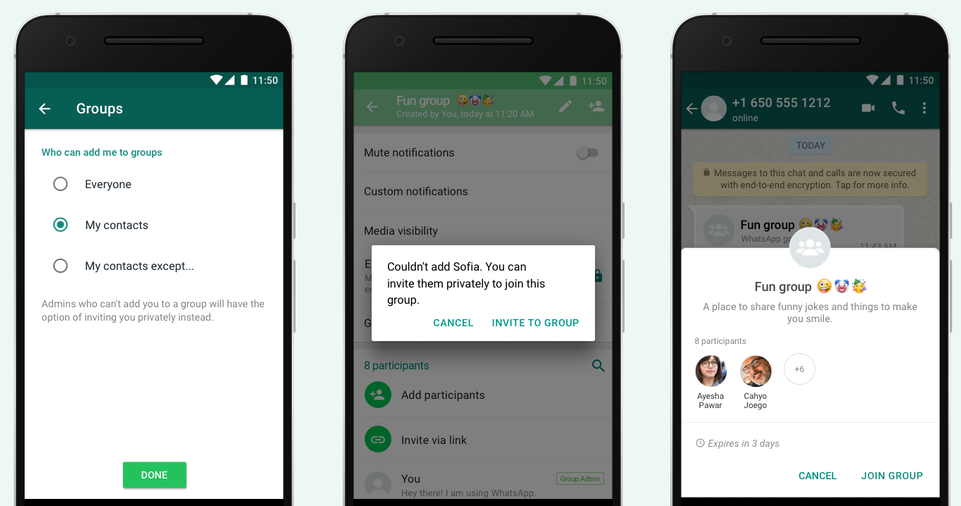Group chats have become a cornerstone of modern collaboration, particularly for projects where seamless communication is crucial.
When used effectively, they can streamline workflows, foster teamwork, and keep everyone aligned.
However, an unmanaged or chaotic group chat can lead to confusion and inefficiency.
In this article, we will explore how to create and maintain effective group chats for projects, ensuring they serve as a valuable tool for your team.
We’ll delve into everything from setting clear objectives to leveraging platform features, offering actionable tips at every step.
Whether you’re managing a small team or coordinating a complex project, these strategies will help you get the most out of your group chat.
The Importance of Well-Managed Group Chats
Group chats are essential for effective communication, especially in a world that increasingly relies on remote collaboration.
They allow for real-time updates, quick decision-making, and a centralized space for discussions.
Without a clear structure, however, group chats can become cluttered, leading to missed deadlines and misunderstandings.
Creating a well-managed group chat involves intentional planning, the right tools, and disciplined communication practices.
Step 1: Define the Purpose
Why Defining Purpose Matters
Every group chat should have a clearly defined purpose.
A group without a clear objective can quickly devolve into off-topic discussions, making it harder to achieve project goals.
How to Define the Purpose
Identify Goals:
Before creating the group, ask yourself: What is this chat meant to achieve? For example, is it for daily updates, problem-solving, or brainstorming?
Communicate the Purpose:
When inviting members, provide a brief explanation of the group’s objective.
For instance, “This chat is for coordinating tasks and sharing progress updates on Project X.”
Stick to the Purpose:
Regularly remind members of the group’s intent to keep discussions focused. If necessary, redirect off-topic conversations.
Step 2: Choose the Right Platform
Factors to Consider
The choice of platform can significantly impact the efficiency of your group chat.
Different tools offer varying features, and the right one will depend on your team’s specific needs.
Popular Options
Slack:
Ideal for professional teams with features like threaded discussions, file sharing, and integrations.
Microsoft Teams:
Excellent for organizations using Microsoft’s ecosystem, offering seamless integration with Office apps.
WhatsApp or Telegram:
Simple and accessible, suitable for smaller teams or informal projects.
Discord:
Great for tech-savvy groups, offering voice channels and advanced organizational tools.
Tips for Selection
- Assess Needs: Consider the size of your team, the complexity of the project, and the required features (e.g., file sharing, video calls).
- Ensure Accessibility: Choose a platform everyone can access easily.
- Test Compatibility: Before finalizing, test the platform’s compatibility with your workflow.
Step 3: Limit Group Size

Why It Matters
The larger the group, the harder it is to maintain clear and effective communication.
Too many participants can lead to information overload and reduced accountability.
Best Practices
- Include Key Stakeholders: Limit membership to individuals directly involved in the project.
- Create Sub-Groups: For large projects, divide the main group into smaller sub-groups focused on specific tasks or teams.
- Regularly Review Membership: Periodically assess whether all members are still relevant to the group.
ALSO READ: How to Choose the Best Tools for Virtual Meetings
Step 4: Set Ground Rules
The Role of Ground Rules
Clear guidelines help ensure professionalism, respect, and effective communication within the group.
Examples of Rules
- Response Times: Specify expected response times for messages.
- Tone of Communication: Encourage a respectful and professional tone.
- Working Hours: Define boundaries for messaging outside of work hours to avoid burnout.
Enforcing Rules
- Share the rules in a pinned message or group description.
- Gently remind members when rules are not followed.
- Escalate persistent issues to a group leader or moderator.
Step 5: Establish Roles
Why Roles Are Crucial
Assigning roles ensures accountability and helps keep the group organized.
Common Roles
- Moderator: Keeps discussions on track and resolves conflicts.
- Task Manager: Tracks tasks and ensures deadlines are met.
- Contributor: Participates in discussions and completes assigned tasks.
How to Assign Roles
- Clearly communicate each member’s role in the group.
- Use tools like role tags or labels if the platform supports them.
- Rotate roles periodically for fairness and skill development.
Step 6: Organize Discussions

Benefits of Organization
An organized chat prevents important messages from being lost in the noise and ensures efficient communication.
Strategies
- Use Threads: Platforms like Slack and Microsoft Teams allow threaded discussions, which keep topics organized.
- Label Conversations: Use tags or labels for specific topics or tasks.
- Pin Key Messages: Highlight important messages, such as deadlines or resources, by pinning them.
Step 7: Schedule Regular Updates
Why Regular Updates Matter
Scheduled updates keep everyone informed and aligned on progress, preventing misunderstandings or delays.
Implementation Tips
- Daily Check-Ins: Set a specific time for quick updates.
- Weekly Meetings: Use the chat to schedule and discuss weekly goals.
- Reminders: Utilize calendar integrations for important dates.
Step 8: Leverage Platform Features
Make the Most of Tools
Maximizing the platform’s features can greatly enhance productivity and collaboration.
Examples
- File Sharing: Share documents and files directly within the chat.
- Polls: Use polls for quick decision-making.
- Integrations: Integrate with project management tools like Asana or Trello.
Step 9: Avoid Information Overload
Challenges of Overload
Excessive messages can overwhelm members, making it harder to identify important information.
Solutions
- Be Concise: Share updates in a clear and concise manner.
- Use Direct Messaging: For side conversations, use private chats instead of the main group.
- Summarize Key Points: Regularly summarize discussions for clarity.
Step 10: Foster Engagement
Encourage Participation
Active engagement ensures the group remains dynamic and collaborative.
Tips for Engagement
- Acknowledge Contributions: Recognize and appreciate members’ input.
- Encourage Feedback: Create an open environment where everyone feels comfortable sharing.
- Celebrate Milestones: Use the group to celebrate achievements and motivate the team.
ALSO READ: How to Boost Collaboration in Remote Work Environments
Step 11: Monitor and Adjust
Continuous Improvement
Regularly evaluating the group’s effectiveness helps identify areas for improvement.
How to Monitor
- Gather Feedback: Periodically ask members for input on the group’s effectiveness.
- Review Metrics: If available, analyze metrics like message volume and engagement rates.
- Make Changes: Implement adjustments based on feedback and observations.







